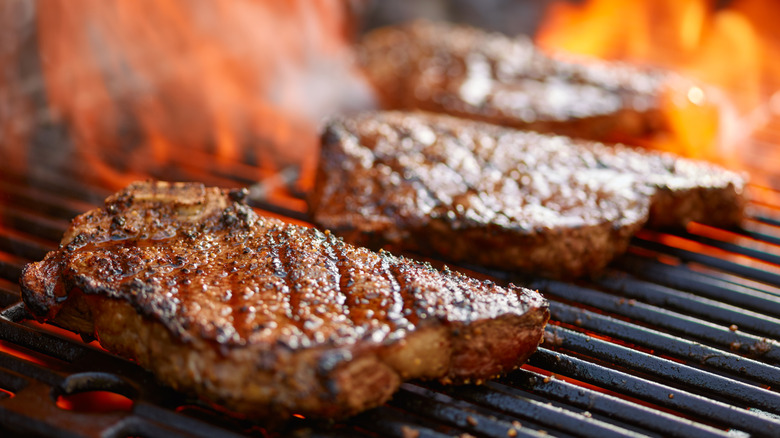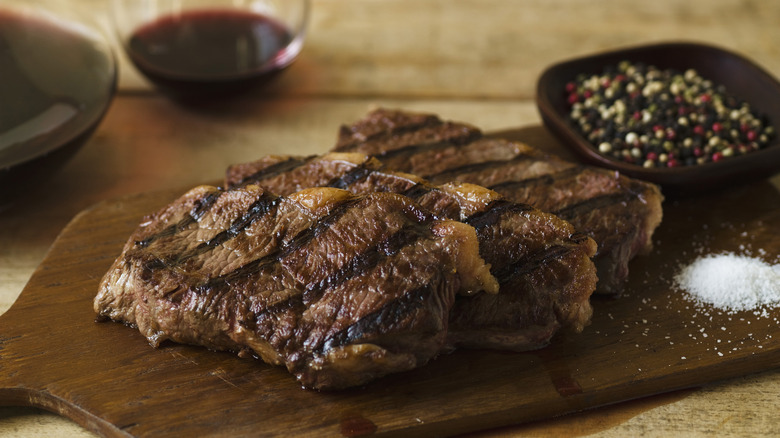The Step You Can't Skip When Grilling Steak
Well-browned with grill marks, a slightly pink center, and a succulent texture, refining the art of a perfectly grilled steak can be a tricky skill to master. A key component to grilling steak comes down to the oil. Before cooking, brush one to two tablespoons of oil on each side of your preferred cut of steak. This not only helps the herbs and seasonings adhere beautifully to the meat but also enhances the cooking process. The oil facilitates heat transfer, promoting the Maillard reaction that creates the rich, crispy, golden-brown crust synonymous with deliciously grilled meats. Additionally, the oil prevents the steak from sticking to the grill, making cleanup a breeze.
Now that you've grilled a gorgeous steak, don't overlook the most crucial step for perfection — resting the meat. According to Anthony Bourdain, letting your steak rest is key to achieving a juicier, more tender bite. While it may be tempting to cut into it the moment it's off the grill, taking just five to seven minutes to rest will make all the difference. Patience pays off!
More tips for grilling the perfect steak
While using oil is important, the type of oil used is just as important. Grilling can get hot — up to 500 degrees Fahrenheit, which is why it's crucial to select an oil with a high smoke point. You might be tempted to use butter or extra virgin olive oil, but both have low smoke points and can cause your steak to burn. Options like avocado oil or canola oil may be your best bet. Avocado oil has the highest smoke point at over 500 degrees, so you can feel confident your grilled steak will be able to handle the high heat without burning.
Once you choose the correct oil, you also need to use an appropriate amount. One common mistake when cooking steak at home is overusing oil, which can result in a greasy, unappetizing meal. Excess oil not only affects the flavor but can also pose safety risks during grilling, as it can cause flare-ups and create a messy, hazardous cooking environment. To avoid these issues, professional chefs recommend brushing the oil directly onto the steak and using no more than one to two tablespoons for optimal results.


